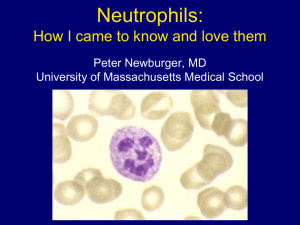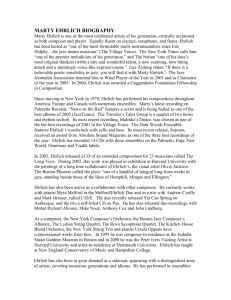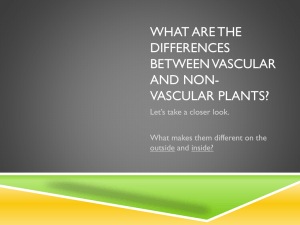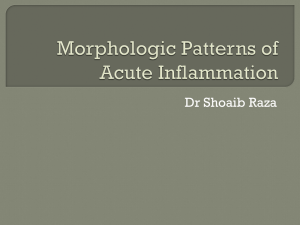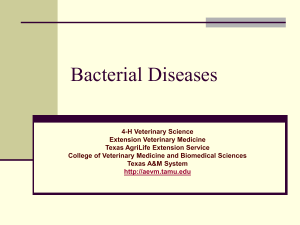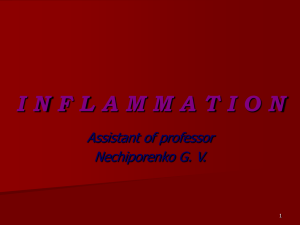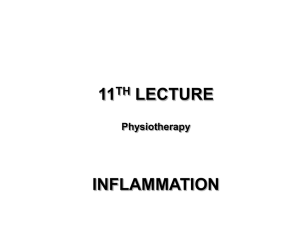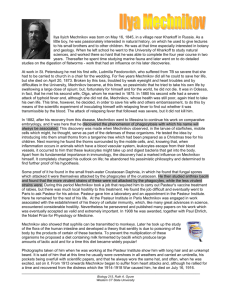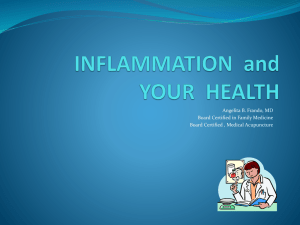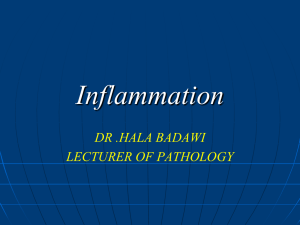inflammation
advertisement
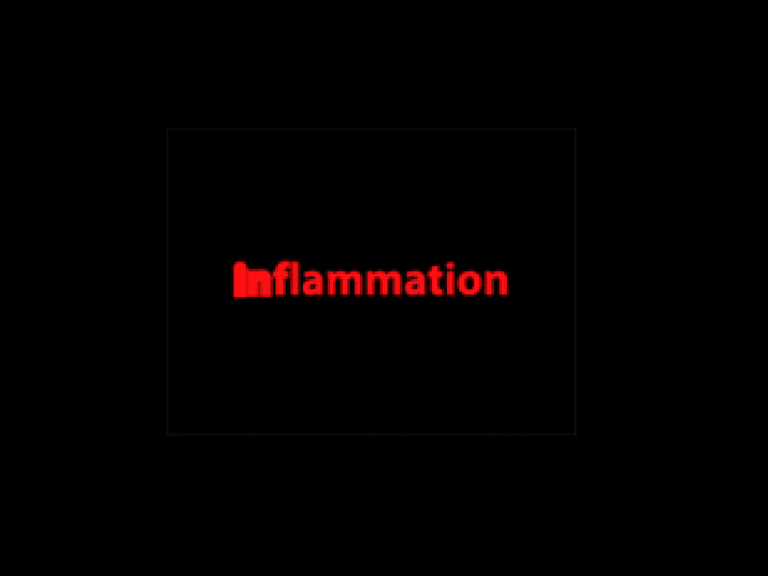
•What is inflammation? •What are the cardinal signs? •What are the vascular changes in Acute Inflammation? •What are the cellular changes in Acute Inflammation? INFLAMMATION • It is a complex reaction to injurious agents such as microbes and damaged, usually necrotic, cells that consist of – Vascular responses, – Migration and activation of leukocytes and – Systemic reactions ‘the reaction of a tissue and it’s microcirculation to injury’ TISSUE INJURY • • • • • Physical Chemical Biological Ischaemia Neoplasm Inflammation and repair are fundamentally protective but may be potentially harmful TYPES •Acute Inflammation : of short duration, edema and leukocyte emigration esp. Neutrophils •Chronic Inflammation : of longer duration, Lymphocytes, Macrophages, Blood vessel proliferation, Fibrosis and Tissue necrosis COMPONENTS • Fluid & Plasma proteins • Cells – Circulating : N, L, M, E, B – Connective tissue : Mast cells, Fibroblasts, Macrophages • Extracellular matrix – Structural : Collagen, Elastin – Adh Glycoproteins : Fibronectin, Laminin, Tenascin etc – Proteoglycans SIGNS • • • • Rubor (redness) Tumor (swelling) Calor (heat) Dolor (pain) -Cornelius Celsus • Functio laesa (loss of function) - Rudolf Virchow Ilya Mechnikov ( Elie Metchnikoff ) and the Phagocyte Cells • In 1882, the Russian scientist Ilya Mechnikov was working in Messina, Italy, studying the larvae of the sea star. When he inserted a thorn into a larva, something weird happened. Mechnikov noticed strange cells gathering at the point of insertion. The cells surrounded the thorn, eating any foreign substances that entered through the ruptured skin. Mechnikov was thrilled. He decided to name these new cells phagocytes from the Greek words meaning "devouring cells." Paul Ehrlich and the Side-chain Theory • • • At the end of the nineteenth century, the German scientist Paul Ehrlich developed the "side-chain theory" to explain immunity and how antibodies were formed. Although we now know that some of his ideas were incorrect, this theory allowed him to accomplish important work and provided the groundwork for later researchers in this field. Ehrlich argued that all cells have a wide variety of special receptors that he called side-chains. He thought that these receptors worked like gatekeepers or locks for the cell. Each receptor/side-chain had a unique structure, and only substances matching this structure were allowed to enter the cell. The side-chain receptors’ primary function was to absorb nutrients for the cell. Unfortunately, the receptors also allowed many toxic substances to enter. According to Ehrlich, the body defended itself against these toxins in the following way: When a cell was attacked by a toxin, it started to produce excess side-chains matching the toxin. These excess side-chains then were released, flooding the body and neutralizing free toxins by attaching to them. The toxin was wiped out and remaining healthy cells protected. Historical Commentary Nature Immunology 9, 705 - 712 (2008) doi:10.1038/ni0708-705 Immunology's foundation: the 100-year anniversary of the Nobel Prize to Paul Ehrlich and Elie Metchnikoff Stefan H E Kaufmann Abstract One hundred years ago the birth of immunology was made official by the Nobel Prize award to Elie Metchnikoff and Paul Ehrlich. Metchnikoff discovered phagocytosis by macrophages and microphages as a critical host-defense mechanism and thus is considered the father of cellular innate immunity. Ehrlich described the side-chain theory of antibody formation and the mechanisms of how antibodies neutralize toxins and induce bacterial lysis with the help of complement and thus is considered one of the fathers of humoral adaptive immunity. Despite many discordant discussions in the initial phase after these discoveries, innate and adaptive responses are now known to be complementary partners in producing robust immunity. ACUTE INFLAMMATION • Changes in vascular caliber • Changes in vascular structure • Emigration of leukocytes, accumulation at site of injury and their activation Changes in Vascular Flow and Calibre Vasodilatation and increased blood flow First involves arterioles Increased Vascular permeability Leads to escape of protein rich fluid into the extravascular tissue Endothelial changes lead to increased permeability The series of events are: • Vasodilation: leads to greater blood flow to the area of inflammation, resulting in redness and heat. • Vascular permeability: endothelial cells become "leaky" from either direct endothelial cell injury or via chemical mediators. • Exudation: fluid, proteins, red blood cells, and white blood cells escape from the intravascular space • Vascular stasis: slowing of the blood in the bloodstream • An exudate is an inflammatory extravascular fluid that has a high protein concentration, cellular debris, and a specific gravity above 1.020 • A transudate is a fluid with low protein content (most of which is albumin) and a specific gravity of less than 1.012 Pus, a purulent exudate, is an inflammatory exudate rich in leukocytes (mostly neutrophils), the debris of dead cells and, in many cases, microbes.

